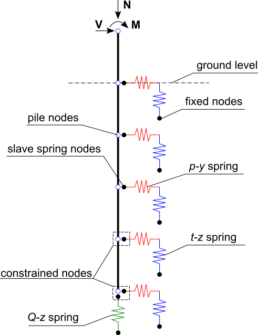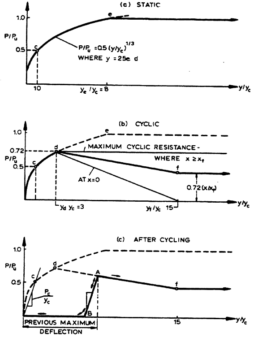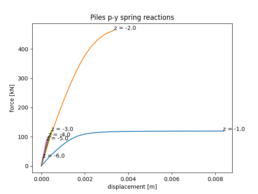Geotechnical study
In order to perform a reliable and cost effective foundation pile design, extensive field investigations must be available to the geotechnical engineer.
The extent (depth and number) of the field investigations must cover a volume of soil which is sufficient to provide to the engineer sufficient information on the soil properties, without adventuring in unreliable and misleading extrapolations outside the investigated region.
If necessary, the field campaign must be extended to cover areas or layer strata that have not been included before and that are considered to be relevant for the evaluation of the interaction between the foundation structure and the soil.

EN 1997-1 (3.2.1)
Geotechnical investigations shall provide sufficient data concerning the ground and the ground-water conditions at and around the construction site for a proper description of the essential ground properties and a reliable assessment of the characteristic values of the ground parameters to be used in design calculations.
Preliminary pile analysis
Once the soil conditions are known to a sufficient extent, preliminary evaluations of the pile geometry, under a set of specific loads, can be easily performed with the help of a spreadsheet.
Spreadsheets can also be used to perform very accurate verifications, however, in a first attempt, this should aim to the identification of the following:
- pile technology to be used
- pile cross section
- pile length
The pile’s capacity, as the sum of lateral and tip resistance, is tightly linked to its embedded length.

Detailed pile analysis
A detailed foundation pile analysis and design can be conducted with more sophisticated tools in order to predict not only the capacity to transfer the loads to the surrounding soil, but also to acquire more information related to:
- axial and lateral deformation
- internal forces along the pile
The two information above provide enough information for the detailed design of the pile, but also an indication for the expected settlement to be compared with static tests, for example. This is a typical case of Soil-Structure Interaction (SSI) analysis.
Deformation analyses are conducted using a discretization of the pile into beam elements connected to lateral springs simulating the interaction with the soil. The properties of each spring element is varying with the depth and are provided in the well know form of:
- p-y (lateral response)
- t-z (axial response along lateral surface)
- Q-z (vertical response at pile tip)


Pile response analysis
Nonlinear analyses have to be performed on numerical model while using p-y, t-z and Q-z curves. Specific codes are available for such analyses. We use third party software combined with in-house procedures to set up models and analyze results.
Results are very variable depending, of course, on the soil conditions, as well as on the loading type. We have done many analyses on wind turbines piled foundations, where, due to the particular nature of the structure, piles tend to be more subject to large axial forces and smaller shear and head moment forces.
As one can see from the picture on the right, only the two top springs are reaching the plastic zone, while deep in the ground the soil is still “linear”.
